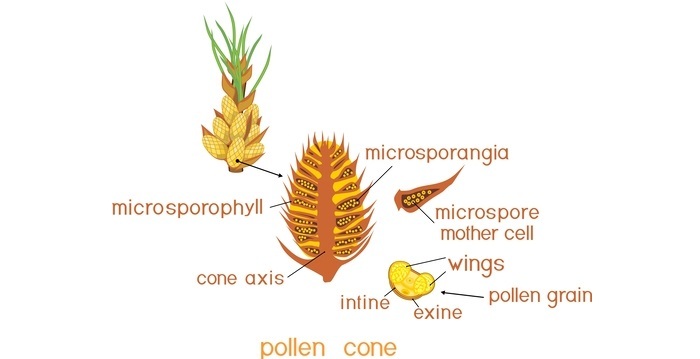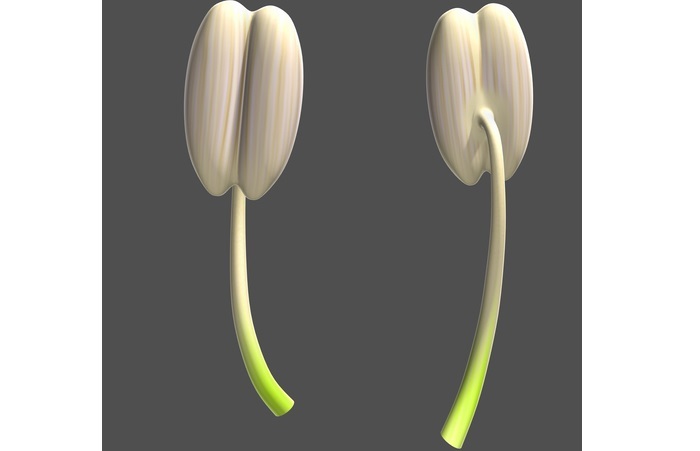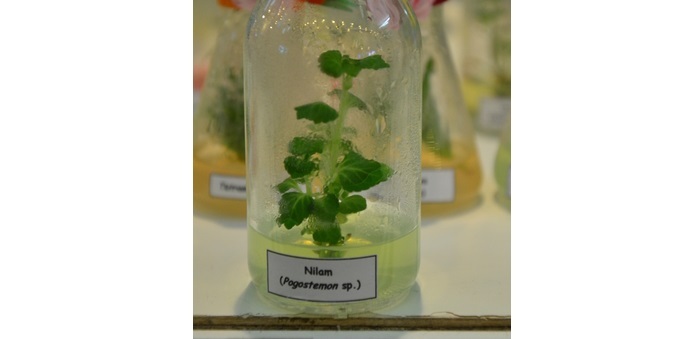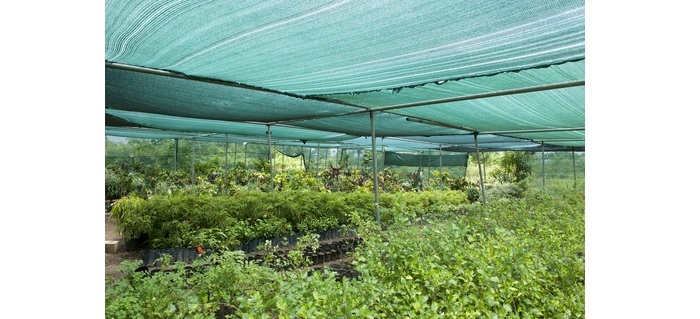
 Data Structure
Data Structure Networking
Networking RDBMS
RDBMS Operating System
Operating System Java
Java MS Excel
MS Excel iOS
iOS HTML
HTML CSS
CSS Android
Android Python
Python C Programming
C Programming C++
C++ C#
C# MongoDB
MongoDB MySQL
MySQL Javascript
Javascript PHP
PHP
- Selected Reading
- UPSC IAS Exams Notes
- Developer's Best Practices
- Questions and Answers
- Effective Resume Writing
- HR Interview Questions
- Computer Glossary
- Who is Who
Anther and Microspore Culture Through Micropropagation
What are Anther and Microspore Cultures?
Anther culture is a technique where the developing anther that contains microspores is cut aseptically from unopened flower buds and then cultured on the nutrient medium for the purpose of generating haploid plants.
Microspore or pollen culture is an in-vitro technique where the pollen grains at the uni-nucleated stage are isolated by squeezing from an intact anther and then cultured on a nutrient medium.
Both the anther and pollen or microspore cultures are widely used for haploid production for crop improvement.

Micropropagation
It is the vegetative propagation (multiplication) of the plant under an in-vitro state of high light force, controlled temperature, and the defined supplement media. The other terms which are same as micropropagation are tissue culture, in-vitro culture, mass propagation, and in vitro clonal propagation.
Clonal micropropagation is the method of asexual reproduction in which the parental genotype produces the vegetative modules. Here the multiplication stage can be recycled to produce an unlimited number of clones.
Micropropagation is the process of producing a large number of plants from rapidly multiplying stock plant material using modern plant tissue culture methods like pollen, anther, ovary cultures, etc.
This process is applied to a significant number of commercially vegetative proliferative or asexually proliferative plants. Hence widely used for ferns, orchids, and many other interior foliage plants. Most disease-resistant plants are produced through this method.
Procedure for Anther Culture
Anther culture was first reported in Datura innoxia by Guha and Maheshwari in the year 1964. The process of developing haploid plants originating from the totipotent pollen grains through the series of cell division and differentiation in in-vitro conditions is known as androgenesis. Androgenesis is of 2 types -
Direct ? Here the pollen or microspores undergoes a change to form embryoids behaving like zygote which ultimately gives rise to the haploid plant.
Indirect ? Here the microspores form a callus tissue by diving repeatedly and this callus then differentiates into haploid plants.
If proper care is not taken, anthers may develop callus tissue or embryoids which can give rise to haploid plants through the process of organogenesis or embryogenesis.
This technique is exploited in plant species like cereals, vegetables, oil, etc.

Structure of Stamen
Steps Involved in the Anther Culture
Steps involved are as follows ?
A flowering plant will be chosen and all the flowers that are bearing tetrad pollen mother cells will be collected from that plant.
These flowers are then surface sterilized using the 70% ethanol and 20% sodium hypochloride to remove the contamination.
Then the flowers are washed with sterile water to remove the surface sterilization agents.
Cut open the flower buds to remove the stamens having anthers using a scalpel.
Discard all the filaments and place the anthers on the nutrient agar medium.
Carry out the incubation at 24O - 26O in the dark for about 2-3 weeks.
Then the anthers can undergo 2 methods to develop haploid plants.
In one stage the anther directly produces the roots and shoots after undergoing a direct method of organogenesis. This does not involve callus formation. And this process is called direct androgenesis.
In another method, which is called as indirect method anthers first produce an undifferentiated cell mass called callus after 3-4 weeks with the incorporation of strong plant hormones, auxin and cytokinin in equal concentrations into the nutrient medium. Usually 2, D is used as a growth regulator. Now the organs are formed from these calli through organogenesis.
These explants are then transferred to the shooting medium where the shoot is formed followed by the roots. Hence this plant is known as a regenerated plant.

Procedure for Microspore or Pollen Culture
Select the flowering plants as anthers are present in the flowers which contain these microspores. Example: Rosella plant which is a dicotyledonous found in tropical countries, whose flowers sepals are used in drinks and for preparation of jellies and jams.
Flower buds are then collected from the 8-week old plant and surface sterilized with the 70% ethanol and for 5 minutes in 20% sodium hypochloride solution.
These buds are then washed in sterile water to remove the surface sterilization reagents.
Cut open the flower buds to remove the anthers from stamens using scalpel by discarding the filaments.
Then squeezing out the anthers extract all the pollen grains or microspores into the medium.
Sieve the liquid medium to collect the microspores from the anther capsules.
These pollen then cultured on the nutrient medium by incubating at 24O - 26O in the dark for about 3-4 weeks.
Then organogenesis is carried out either by direct androgenesis or indirect androgenesis through callus formation in the nutrient agar medium containing 3% sucrose, NAA, 2,4 D.
Transfer the calli to callus induction medium which contains IAA and Zeatin with 16hours light.
Just like in anther culture, the explant is then placed on a shooting medium containing 3% sucrose, Benzylaminopurine, and Gibberellic acid than on the rooting medium to develop shoot and roots. Later leaves also developed which were then called regenerated plantlets.
Such plantlets which are formed either by pollen culture or anther culture are shifted to the greenhouse for hardening or acclimatization process. Hardening is the process where the plantlets are exposed to natural conditions in a stepwise manner which is the gradual acclimatization of in-vitro plants to the in-vivo conditions.

Factors Affecting the Pollen and Anther Culture
Genotype of a donor plant or mother plant - Genotype plays an important role in determining the frequency of pollen production. Usually hybrids respond well.
Physiological status of the donor plant - physiological status of the plants during anther excision influences the pollen efficiency. Plants starved of nitrogen may give more responsive anthers compared to the well fed with nitrogenous fertilizers.
Stage of the microspore - Anthers are more productive when cultured at uni-nucleate stage. Examples are barley, wheat and rice. Suitable stages of anthers for culture are pre-mitotic, mitotic, and post-mitotic stages.
Culture medium - For anther cultures, based on the genotype and age of anther medium requirements may vary. It is shown that the incorporation of activated charcoal has stimulated androgenesis. Potato extracts, coconut milk, and growth regulators are used for pollen and anther cultures.
Pre-treatment of anthers - to proceed with for the pollen culture, we need to stop the development of pollen cell which result in gamete formation. Cold treatment at 3-15O for 3-15 days gives a good response.

Applications of Anther and Pollen Cultures
A few applications include ?
Anther culture is useful for in-vitro conservation of the endangered species.
Useful for the development of haploid plants to improve crops.
Helps in development of insect resistant crops. Examples include insect resistant rice varieties which are developed through anther cultures.
Also helpful for the development of salt tolerant plant varieties.
Applicable of haploid plants in cytogenetic research.
Conclusion
Haploid plants containing one basic set of chromosomes are known to play a major role in crop improvement. So in plant biotechnology there are many techniques which can produce these haploid plants. One such important technique is plant tissue culture or micropropagation or in-vitro culturing etc.
Pollen or microspore is the fertilized powder present in the powdery form to coarse texture in the anthers of male androecium. Both the anther and pollen cultures can produce the haploid plants through the process of androgenesis.
This androgenesis can occur by direct method or indirect method using the suitable culture mediums. Haploid plants are majorly useful in producing the disease resistant varieties of crop plants. Micropropagation is the process which can produce large number of plants from an obtained plant material or explant using the modern tissue culture techniques.

